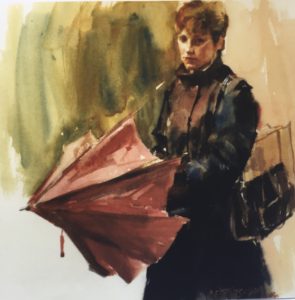I heard shocking and urgent news recently, back to back. Five days later I am still trying to figure out how to respond to this unfolding story. Even though much of the news makes me feel as if I just got sucked into a dangerous abyss, there are still robust moves we can all make. All is not lost, if we work together to help one another.
The first news was the summary of a soon to be released 1,500 page report authored by the United Nation’s Intergovernmental Science-Policy Platform on Biodiversity and Ecosystems Services (IPBES). It’s official! We are now facing our planet’s sixth wave of extinction with over one million species of plants, animals and insects potentially on the block, and soon. Sounds like a holocaust to me.
The next news arrived in the May/June issue of the MIT Technology Review. The cover says “Welcome to Climate Change”. For those of you who may be unfamiliar with this publication, MIT is one of the world’s premiere scientific think tanks. Whatever topic they discuss is validated by credible research and fact-based evidence so the publication is reliable and trustworthy. They discuss science and technology in the context of its sociological, cultural, economic and political context. Much of the discussion of climate change currently centers on how we can avoid it. We remain hopeful and comforted about technology’s romantic and futuristic ideas about how to avoid climate change but it’s no longer possible. We entertain ideas about mitigation measures such as engineering the atmosphere and carbon capture. But the magazine says it’s time to “get real” because the momentum of climate change is too swift, even if we were to slam the brakes on it now. Truth is, global temperatures and emissions are rising, not falling. A big chunk of the Arctic’s oldest and most stable sea ice recently broke off. We’ve made no dent in the use of fossil fuels. And on and on the list goes. So, time to shift the dialogue to understanding how this new, catastrophically altered world will look and how we will adapt.
Why do they suggest shifting the focus more towards adaptation? Because efforts to transform this situation will not likely be successful fast enough. The first world countries are too busy and distracted to notice or care and they hyper-consume. The populations in third world countries are exploding so that will be a huge drain on planetary resources. Repeated attempts have been made internationally to create a cohesive, long-term global vision and plan of action. Yet commitment among most countries is notably absent. I add to this, that many powerful multi-national corporations have deeply vested interests in maintaining the status quo. Unfortunately, the tragedy is that by the time climate change is obvious to everyone, it will be far too late.
What to do, or not do, then? How do we still enjoy the life that is before us and keep our optimism alive? While the United Nation’s report was dreary and startling, they say “Nature can be conserved, restored and used sustainably while simultaneously meeting other global societal goals through urgent and concerted efforts fostering transformative societal goals – including those for food, water, energy.” Those of us who see what is coming can show up, stand up and hold together with heart, courage and commitment. Those who are uncertain can gradually join in. Amid all this uncertainty, one thing is for certain: this situation will be far easier if we take a joint approach rather than a divisive one. This holds true whether we avert the crisis or adapt to it. Think of it this way: we have an opportunity to witness breathtaking transformation here, regardless of the outcome.
As I write this, I look out my window and see drooping tulips whose early spring time vigor has waned yet their beautiful deep red is still extraordinary. A blue jay rests on a nearby fence, iridescent in the evening light. These, along with the yellow pepper on my plate create a palate of primary color that is indescribable to behold. In this moment, embraced by the beauty of Mother Nature, I am nourished and at peace. No matter how ominous the long term picture may look, it’s always easy to find something to appreciate. We don’t need to sit in the bottom of an utterly dark abyss. If we do that, we can’t see, appreciate or protect the cornucopia of gifts our beautiful planet constantly gives us. Why not visualize the sudden enlightenment of the world instead?
If you’d like to know how The Joy of Plenty can help you make a contribution to the creation of planetary health and relieve your anxiety about its current state, stay tuned for the next series of blog posts. Look below for a link to the summary of the United Nation’s IPBES report.

https://www.ipbes.net/news/ipbes-global-assessment-summary-policymakers-pdf



